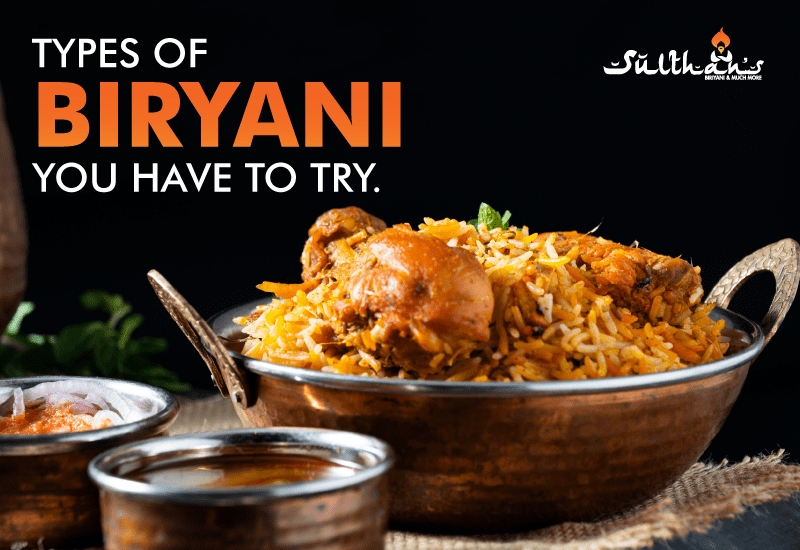Why Does Everyone Celebrate Biryani?
Meat that is tender and succulent. Saffron, nutmeg, and cardamom-infused fluffy long-grained basmati rice topped with browned crispy curls of onion and a fried garnish of cashews and raisins. Served with raita and bagara baigan on the side. This gastronomic delight of the Indian subcontinent is no wonder a sure-shot way to win a foodie’s heart!
The word ‘biryani’ can make you hungry immediately, no matter the time of the day. For those who eat rice as a staple in their diet, biryani is a special dish cooked and savoured with a lot of love for it.
The history of biryani spans centuries, civilisations, and cooking styles; the dish evolved into its current form by absorbing elements from various cultures. Cooked in homes throughout the country for special occasions such as weddings and festivals, it is also available on the menus of fine dining establishments and roadside eateries.
Biryani was created in the royal kitchens of the Mughals, who ruled India from the 15th to the 18th centuries. It rose to prominence as palace fare, and served to royalty on gold and silver platters. Preserving the history and the rich culture of the dish, biryani still holds the same value among people in India, Pakistan, and Bangladesh, though it is affordable to everyone today.
Local flavours and ingredients have blended to create many distinct ways of cooking the dish in different regions. India’s more well-known biryani styles are from Kolkata, Hyderabad, and Lucknow.
The 7 Most Delicious Types Of Biryani You Must Try!
Hyderabadi Biryani
The Hyderabadi biryani, brought to India by the Mughals, is adorned with a generous amount of whole spices such as cardamom, star anise, and cinnamon.
It’s typically prepared using the layering method, where semi-cooked basmati rice (drizzled with Kesar water) and raw meat/vegetables (mutton or chicken) are layered one on top of the other and cooked in a dough-sealed closed pot on low heat until the meat and rice are slow-cooked and the flavours from the meat have absorbed into the rice.
Garnished with fresh coriander and mint leaves, this is usually served with Mirch ka salon and raita.
Lucknowi Biryani
Biryani was a show-stopper for royal feasts for the Nawabs of Lucknow. The Lucknowi Biryani truly embodies the royal lifestyle: rich, deep but subtle, and exquisite.
The Lucknowi Biryani, also known as the ‘Awadhi biryani,’ stands out due to its cooking style, known as dum pukht. It uses the same layering technique as the Hyderabadi biryani.
However, the taste of Lucknowi biryani differs in the level of spiciness and flavours in the dish. It can be a great biryani of choice for those who want their biryani less spicy and lighter on their tummy.
Calcutta Biryani
Though Calcutta Biryani originated in Kolkata, its roots can be traced back to Lucknow’s Awadhi-style biryani. It is made with light yellow rice and layered with yoghurt-based meat, soft-boiled eggs, and potatoes. It has subtle flavours with a hint of sweetness and sparing use of spices.
Add to that nutmeg and kewra, which give the biryani a soothing aroma. To add flavour and colour, it is then seasoned with rose water and saffron.
Fun fact: The addition of eggs and potatoes to this biryani was an attempt by the Mughals of Kolkata to make the dish more affordable for the common man, as the prices of meat were constantly increasing during the mid-1800s.
Ambur Biryani
When visiting Tamil Nadu, it’s almost impossible to overlook the multiple shops selling only Ambur biryani. This Biryani stands out from the crowd because of the rice used – seeraga samba rice – which gives the dish a very earthy flavour.
The Nawabs of Arcot introduced this particular type of Biryani in this state, and it has since been one of the most loved biryani recipes. The dish would be incomplete without a sour eggplant curry called the ennai kathirika and raita. The dominant flavours are coriander and mint, along with the meat used.
Dindigul Biryani
Down south, along with Ambur Biryani, the Dindigul biryani uses black pepper and south Indian garam masala to amp up the flavour. Before cooking, the meat is marinated in curd and lemon, adding a fresh, tangy flavour to the biryani.
While this preparation is similar to Ambur Biryani, the authentic taste and flavours of Dindigul Biryani are unmatched! If you’re ever in Chennai, you will see multiple outlets serving this biryani dish, full of flavours and spices.
Tellicherry/Thalassery Biryani
Hailing from the scenic coastal town of Malabar in Kerala, the Thalaserry Biryani is a recent favourite among Biryani lovers of the country. This biryani dish is prepared with the jeerakasala/khyma rice instead of Basmati and is considered the easiest Biryani recipe ever!
At the time of serving, the rice and meat are mixed, topped with fried onions, fennel seeds, cashews, and coriander, and served in the same pot it was cooked in. The majority of Indian spices are used in the preparation, with only a small amount of chilli.
The Thalassery/Malabar Biryani is best served with raita or coconut chutney.
Sindhi Biryani
The Sindhi Biryani originated in the Sindh Province (now Pakistan) before the partition. It has since evolved into an important part of Sindhi and Pakistani cuisine. This biryani is truly exotic in taste, and its aromatic spices and flavour make it a treasure of sorts.
This biryani’s flavour is piquant and aromatic due to the generous use of chopped chillies, roasted spices, mint and coriander leaves, onions, nuts, dried fruits, and sour yoghurt. Garnished with plums and potatoes, this spicy Biryani is bound to make you break a sweat!
Check Out These Biryani Starters For A Wholesome Meal
What’s a complete meal that doesn’t start with starters and end with desserts? To enjoy the full experience of a delicious biryani, Sulthan’s offers a wide range of Indian and Continental non-veg appetisers that will act as a great start before you savour the biryani.
Here are some of our most popular and best-rated starters:
- Kebab
Kebab or kabob is a type of cooked meat dish that originated in Middle Eastern cuisines. It is a dish made up of small pieces of meat, tomatoes, onions, and other vegetables threaded onto skewers and grilled, usually over charcoal. Also known as shish kebab, kabob, and cabob, it’s the perfect appetizer for a big meal.
- Kabsa
Kabsa or Majboos is a mixed rice dish that originated in Saudi Arabia. It’s a dish made with meat or chicken and a variety of rice. The spices used in kabsa contribute significantly to its flavour, which includes black pepper, cloves, cardamom, saffron, cinnamon, black lime, bay leaves, and nutmeg.
- Grilled Chicken
Grilled chicken is one of the most popular non-veg appetisers. It’s a scrumptious chicken dish soaked in hung curd, and Indian spices like cumin and black pepper, served with cherry tomatoes, spring onion garnishes, and fresh salsa.
- Tandoori Chicken
Tandoori Chicken is a traditional Indian non-vegetarian dish in which chicken cutlets are soaked in rich Indian masalas and strained yoghurt. It is then cooked on low heat until juicy and tender.
Find The Best Biryani In Town!
The delicious combination of biryani rice and complex spice flavours renders a distinct aroma to this Indian dish. If you’ve ever had the best biryani, you know what all the fuss is about. After all, no other dish in the world is as royal and flavorful as biryani.
And to taste the best biryani in town, what’s a better place than Sulthan’s Biryani? From Lucknowi and Kolkata-styled biryani, we will satisfy all your biryani cravings with our authentic recipes and traditional ways of cooking. Popular in most Tamil weddings, the woodfire way of cooking biryani is considered the best biryani down south. And our chefs at Sulthan’s Biryani give you the best biryani experience by cooking the dish in the same way.
With rich spices and appetizing flavours, you’re bound to taste the best biryani at Sulthan’s!
Conclusion
The first bite of aromatic and hot biryani can immediately make you feel all warm and happy. If you rely on biryani to lift up your spirits and comfort you on your bad days, don’t worry, you’re definitely not the only one!
Cooking biryani is an art form. A good biryani is judged by the quality of the meat and rice, along with the spice blend. Every grain of rice in a perfect pot of biryani should be separate. The meat should be tender enough to fall off the bone but not overcooked.
Now that you know the various types of the dish and what to look for in a good biryani, it’s your chance to taste this savoury dish from biryani experts at Sulthan’s Biryani! Trust us, we make every bite your best one yet.
Frequently Asked Questions (FAQs)
1. How many types of biryani do we have in India?
Almost every part of India has its own variation of biryani. In total, India has around 26 varieties of the good ol’ biryani.
2. Which is the spiciest biryani?
Hyderabadi biryani is considered to be the most spicy biryani due to its meaty and spicy flavours.
3. Which biryani is the least spicy?
The Lucknowi biryani (also known as Awadhi biryani) is the least spicy among all as it is low in spices and light on your stomach.
4. Is biryani Pakistani or Indian?
The Mughals were responsible for introducing biryani to Northern India. Since the majority of the ingredients are pre-cooked before combining in a pot, it was originally known as pakka biryani.
5. Which type of biryani has potatoes in it?
Kolkata’s version of biryani is the only non-veg biryani dish that adds potatoes along with meat and rice. This was an attempt to make biryani more affordable for the common man.




